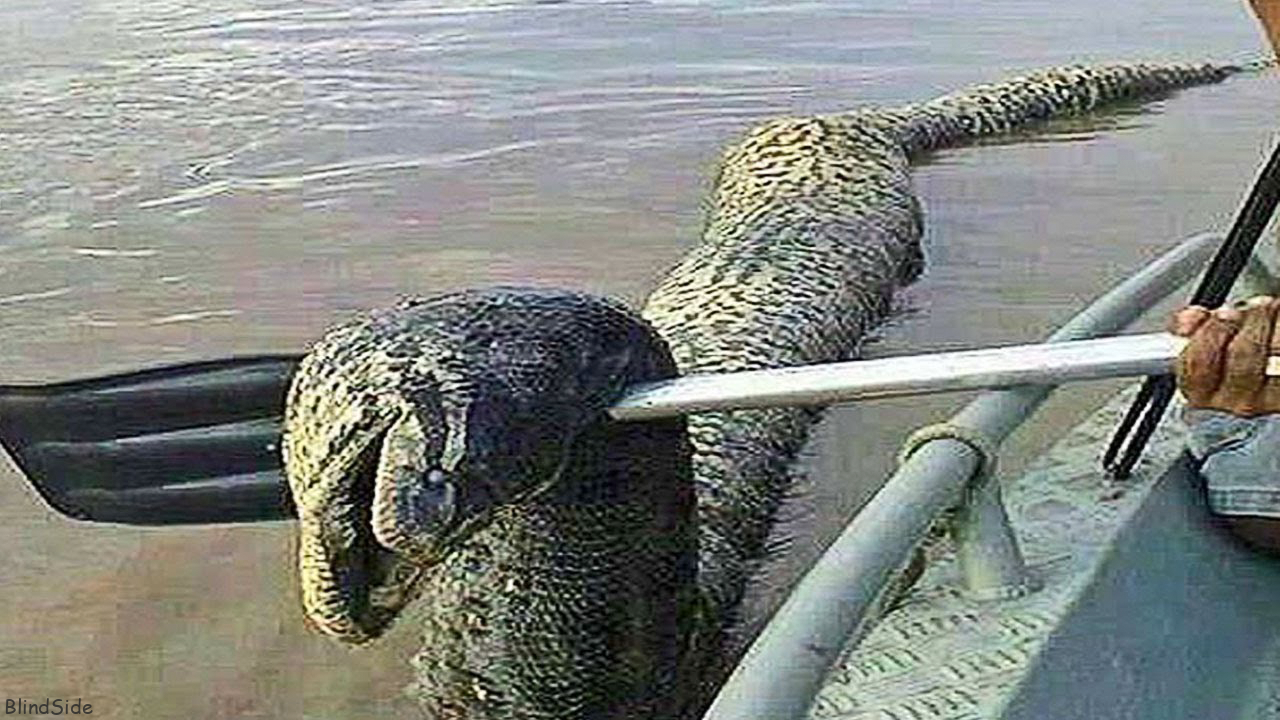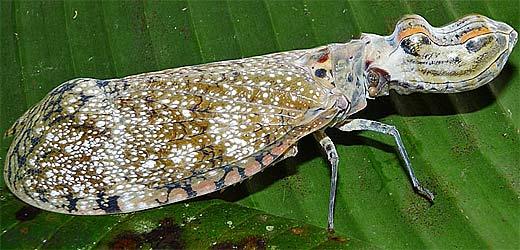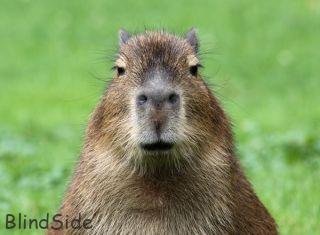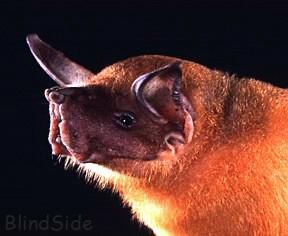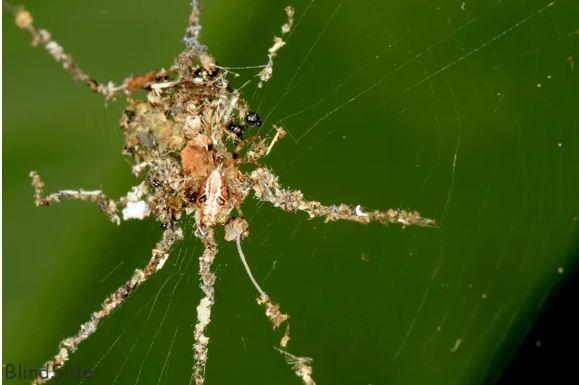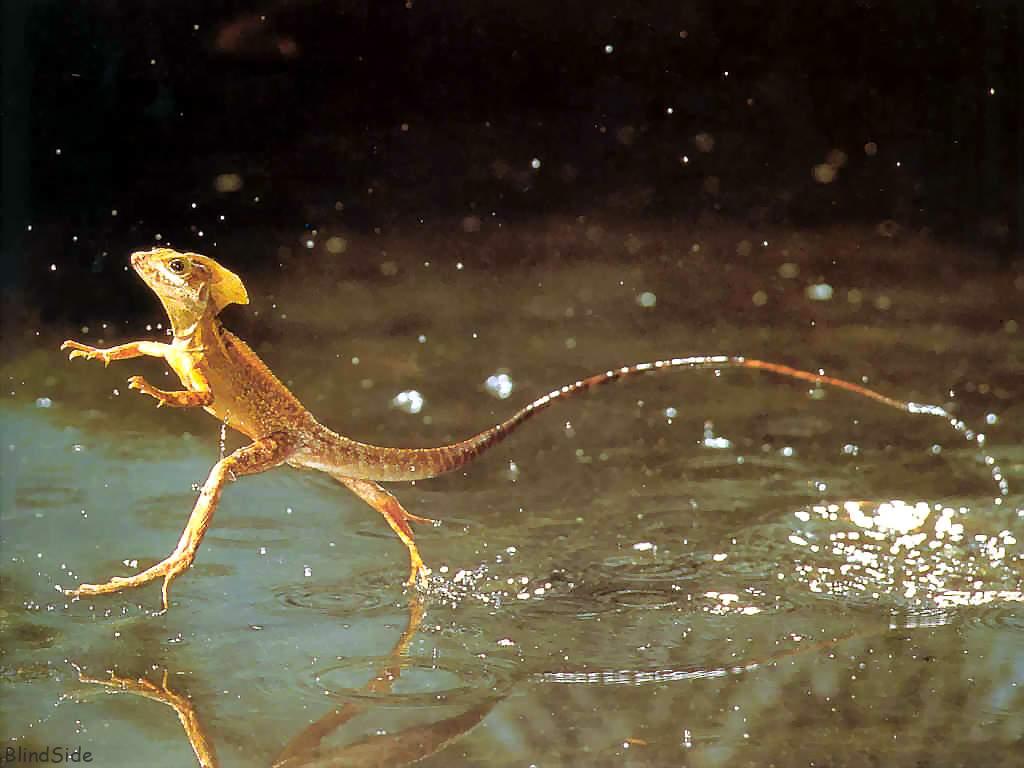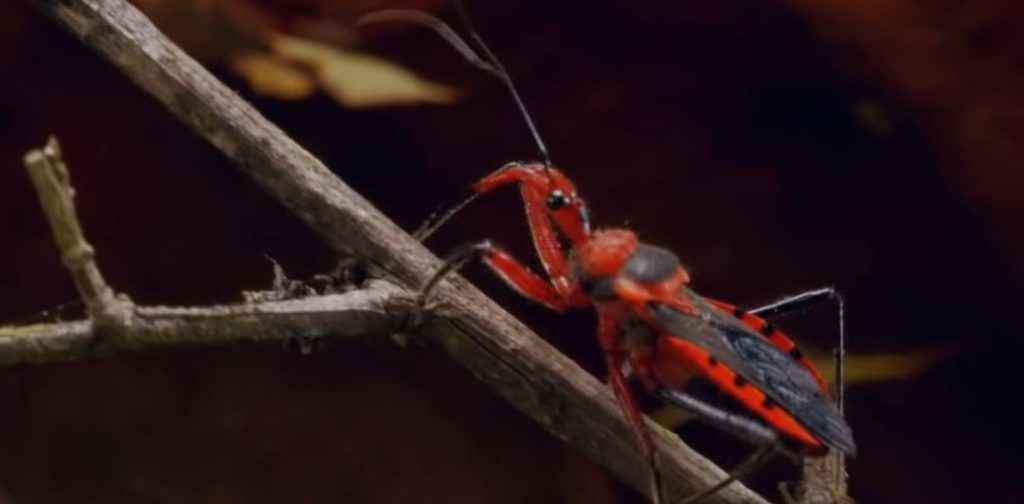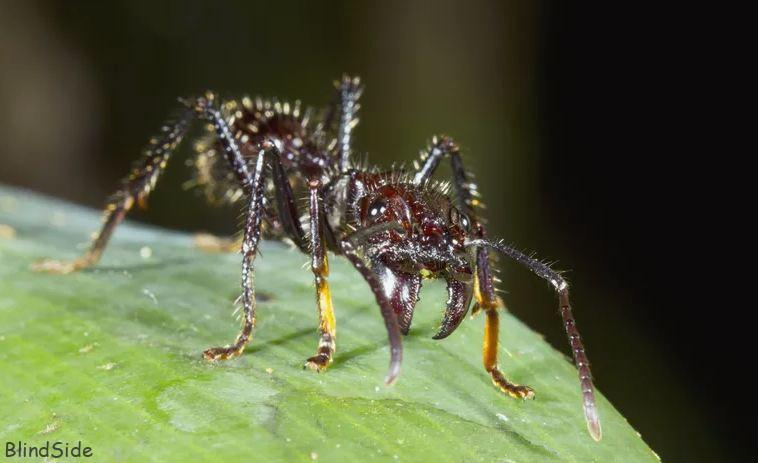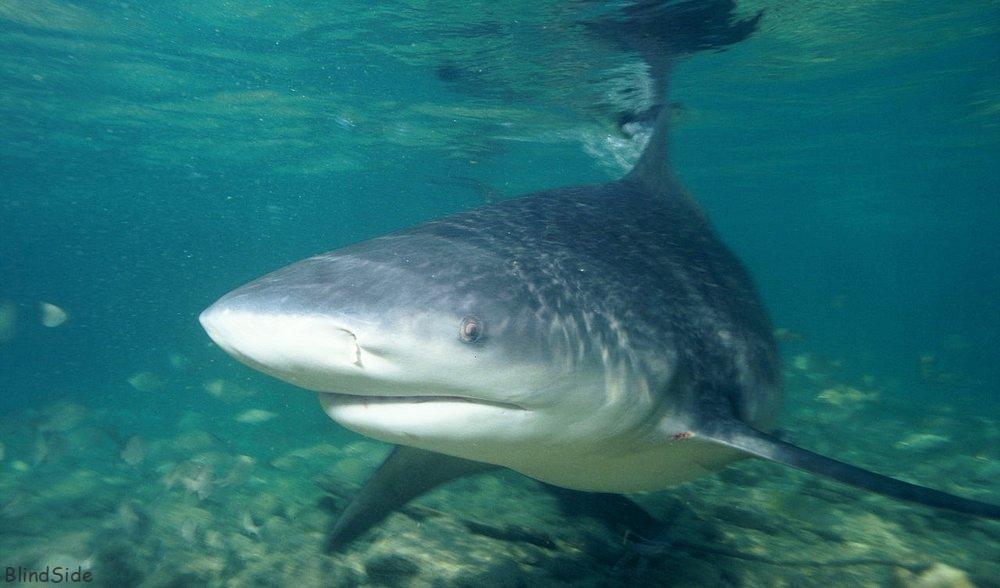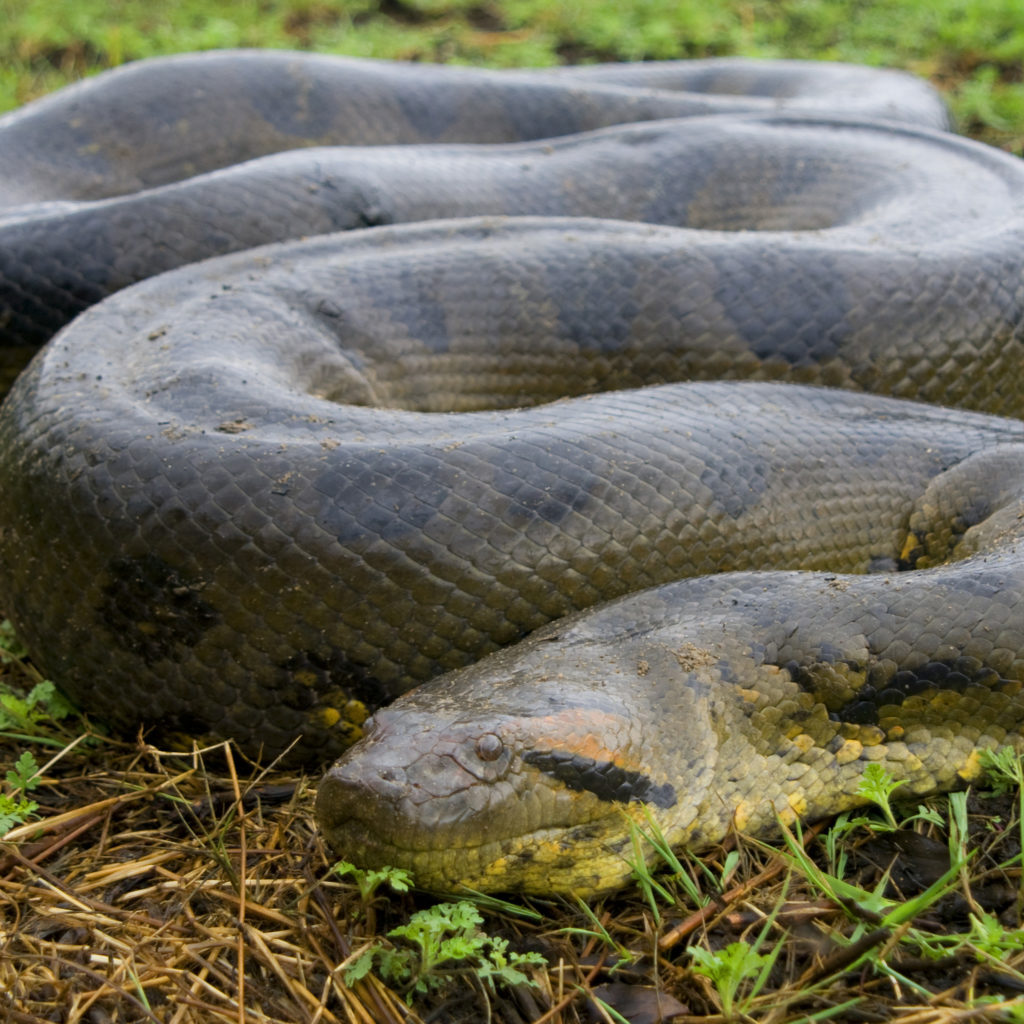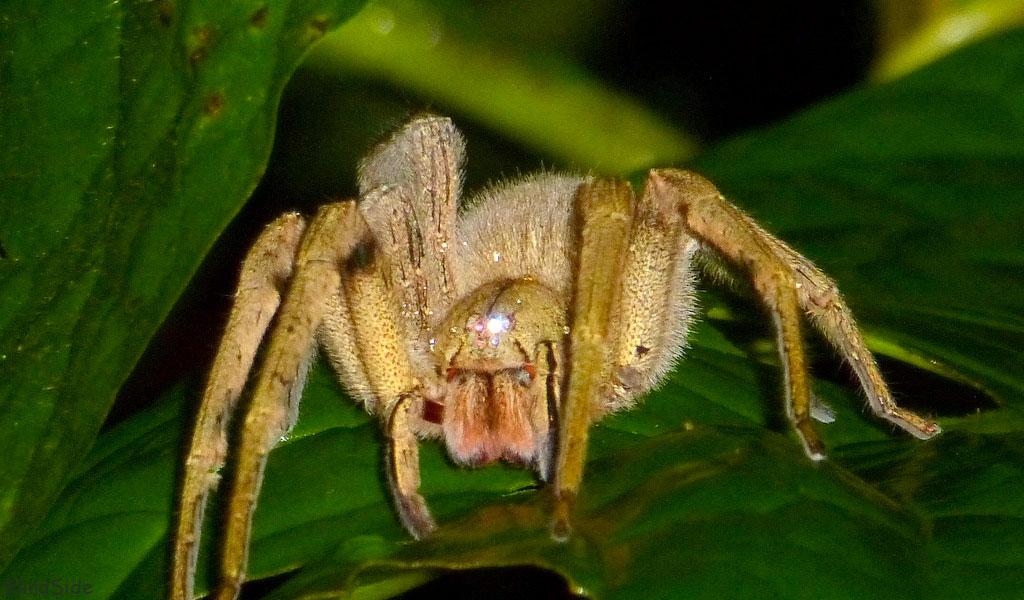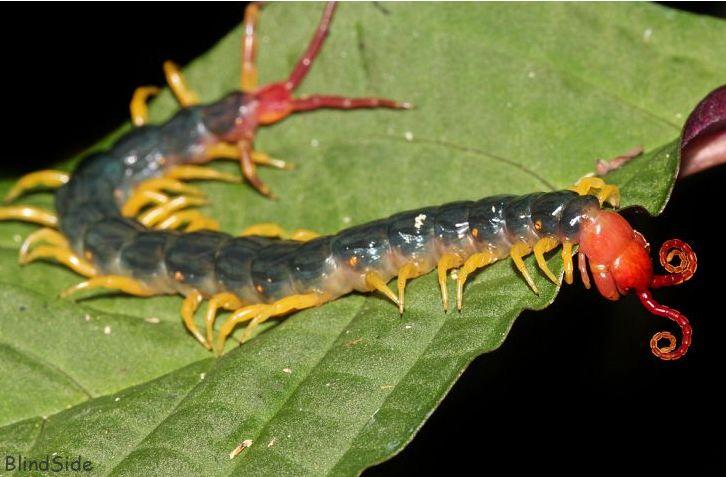Intro
We are here on the Blind Side, The Amazon Rainforest covers millions of kilometers of land from Brazil to Peru and everywhere in between. Therefore, it’s not hard to believe there is plenty left to be discovered within. From an amphibian that can kill you with a single touch, to an ant that could bring a man to his knees, here are 15 unidentified river monsters caught in the Amazon.
15. Vampire Fish, or Payara
While not entirely unknown, the payara, also known as the vampire fish, is not a fish with which all that many people are familiar. This fish thrives in the waters of South America and is as feisty and evil as its name suggests. So much so, that people also call it a water wolf or saber-toothed tiger fish.
They grow up to three feet long, weigh around 35 pounds, and only eat meat. That means that humans aren’t entirely off the menu – although there’s no evidence to suggest they’ve ever dined on our kind.
But that’s not to say they couldn’t. Spiky dagger-like teeth line their gums, and they have two long fangs that extend from their lower jaws. At up to six inches long, these fangs have to fit within perfectly sized slots in their upper jaw as there is nowhere else for them to go!
They’re fast thanks to their fan-like fins that cut through rapids, and they are ferocious hunters. It’s not uncommon to find them bullying other fish that stand in the way of them finding something they want to eat. They spend their entire lives searching for food, and nothing stands in their way. If you are going to give these fish any name, then a river monster is a suitable fit.
Time for the Star Topic!
When we saw this photo, we recoiled in horror a little bit. So you know it’s got to be a terrifying river monster! The photo was taken in a body of water by a fishermen who didn’t expect to catch anything other than fish that day. When this beast hooked onto his line, he knew he needed to get a picture. The man isn’t sure whether it’s a giant eel, a snake, or the Loch Ness’s cousin. What do you think? What is this unidentified river monster?
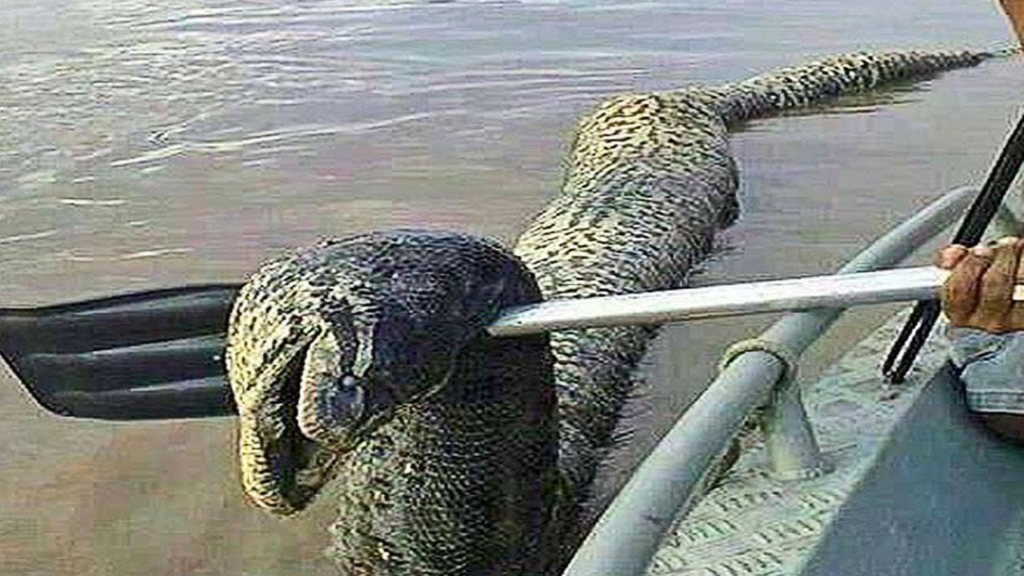
Comment down below with the hashtag #StarTopic, and let us know your opinion in relation to what we just showed on screen. With that said, let’s keep things moving!
14. Peanut Head Bug
If you thought river monsters in the Amazon had to be large, ugly fish and beasts that devour man, then you’d be wrong. They can also be small, discrete insects that are monsters in an entirely different way.
Take the peanut head bug, for example. At three inches long, it’s not going to be in any hurry to take down a jaguar, but it’s wily and has some incredible defenses to keep itself safe. It gets its title from the shape of its head. You guessed it; it looks like a peanut.
Scientists believe the head grows like that to make its enemies think it’s a lizard. As many animals don’t eat lizards, it’s one of the few defense mechanisms it has.
The others are the red and black spots on its wings to look like eyes, and a skunk-like spray as the final straw.
Speaking of straws, the peanut head bug has a mouth like one. It can’t bite, so it gets its nutrients from plants by sucking all of the juices out of them.
The peanut head bug is not the most ferocious river monster of the Amazon, but it’s pretty weird all the same.
13. Pink Dolphin
Just when you thought dolphins couldn’t get any cooler, they go and turn pink! One of the many unidentified river monsters found in the Amazon is the Amazon River Dolphin, which goes by the name of Boto. It gets its coloring most likely from its blood capillaries, and it can grow even bigger than a human! It weighs up to 400 pounds and around nine feet long. What’s more, it can comfortably live in the Amazon for about 30 years.
The pink dolphin has around 40 percent more brain capacity than a human, which makes them a reasonably intelligent species. They live in groups of up to four at food-rich river mouths, and they are inquisitive by nature. If they see a human in the Amazon, they have no problem getting up close and having a look.
Even more unique still is their body. These dolphins do not have fused vertebrae, which means they can turn their heads up to 180 degrees. While you might think that’s to give you nightmares, it’s really just to help it navigate obstacles in the rivers.
Perhaps what gives them the title of a river monster, however, is the legend surrounding them. As the story goes, river dolphins turn into men at night to seduce young women. Monster or friendly dolphin? Wait until night falls to find out…
12. Capybara
We class the capybara as a river monster of the Amazon not because it’s some great, ugly beast, but because it eats its own feces! The capybara is up there in terms of being one of the largest rodents and weighs up to 200 pounds. They hang out in groups of between 10 and 100, and feast on their feces in the morning to gain extra nutrients.
When they aren’t devouring digestive delights, they’re trying to protect themselves from anacondas, pumas, caimans, and ocelots – all who want to devour this herbivorous creature that poses no risk to humans.
Capybaras are unique. They have a body shape of a pig, partially webbed feet, and dark brown to red fur. Their eyes, nose, and ears are also small while being located near the tops of their heads, so they remain on high alert when swimming.
Swimming is one of their best skills. They thrive in flooded savannahs, wetlands, and bodies of water in forests. They eat water plants and grass, constantly chew to keep their teeth short and can stay underwater for around five minutes. There’s no denying the capybara is a genuinely remarkable animal – albeit, a bit strange!
11. Fishing Bat
The fishing bat has us stumped. Not only is it the only species of bat to be able to fish for food, but it was only discovered in Central and South America in 1953. Why does that have us stumped? Because you can smell these creatures before you see them, which makes us wonder why it took so long to notice them!
The fishing bat is the world’s largest bat species and is often called the bulldog bat. It has a dog-like snout, small eyes, and cheek bags that are oddly similar to those of a bulldog. The odor comes from the feces and uneaten fish in their resting spots, which are often in trees overhanging cliffs.
This unique bat is a little bit foul and a little bit interesting. Once night falls, it uses its sonar to detect ripples in the water, before swooping down on fish to take back to its resting place. It resides in forest regions and by the ocean and grows to around five inches long.
Even though their bodies are small, their wings are not. Their wingspan is around 12 inches, which is longer than other bat species. Because they face fewer obstacles, but have to fly longer distances, their massive wings help them to glide. Their legs are longer than bats outside of the Amazon, too, for they use these and their large claws to catch fish.
10. Arapaima
If you wanted to give the term river monster an actual name, it would be Arapaima. The arapaima is a carnivorous fish that, given the opportunity, would become the fish of your nightmares. It lives in lakes and dark waters around the Amazon and feeds on fish and birds. It’s a very skilled predator, and that shows in its 200-pound bulk and nine-foot length.
The arapaima is not only large but isn’t about to appear on any Miss America beauty pageants any time soon, either. It has a gray, scaly body, tapered head, and a full body.
Perhaps the more interesting point of this fish is that it tends to prefer air to water. It will stay underwater for 10-20 minutes at a time but likes to loiter around the surface of the water. When they breach the surface, they make a distinct coughing sound.
Their affinity for air makes them an easy target for humans. They can quickly be taken down with harpoons and turned into that evening’s dinner. The arapaima is as much a river monster today as it was when its fossils were found over 23 million years ago.
9. Decoy Building Spider
Most people have seen videos of cute kittens and puppies viewing themselves in mirrors for the first time. They either try and play with themselves, are spooked, or go into attack mode. A mirror or glass is the only opportunity any of us get to know what we look like. But there are no mirrors or glass in the Amazon, so how does the decoy building spider do what it does?
This unique spider, which was discovered in 2012, manages to build larger versions of itself with dead insects, leaves, and debris. The replica is in every way anatomically correct, with a head, body, and eight legs. They are so accurate that predators on the hunt for dinner will attack the fake spider, rather than the real one.
And scientists are intrigued. The decoy building spider, which is part of the genus Cyclosa, is a small spider that doesn’t have too many defense mechanisms. So it has flexed its creative muscles and thought outside the box.
Biologist and science educator Phill Torres said this defense mechanism is supposed to serve as a way to confuse or distract predators. He said the spider seems well-evolved and capable of specialized behavior.
While other members of the Cyclosa family have attempted decoys in the past, none have been as detailed and precise as these. So, it begs the question: how do they know what they look like? This arachnid of the Amazon is as mysterious as they come.
8. Poison Dart Frog
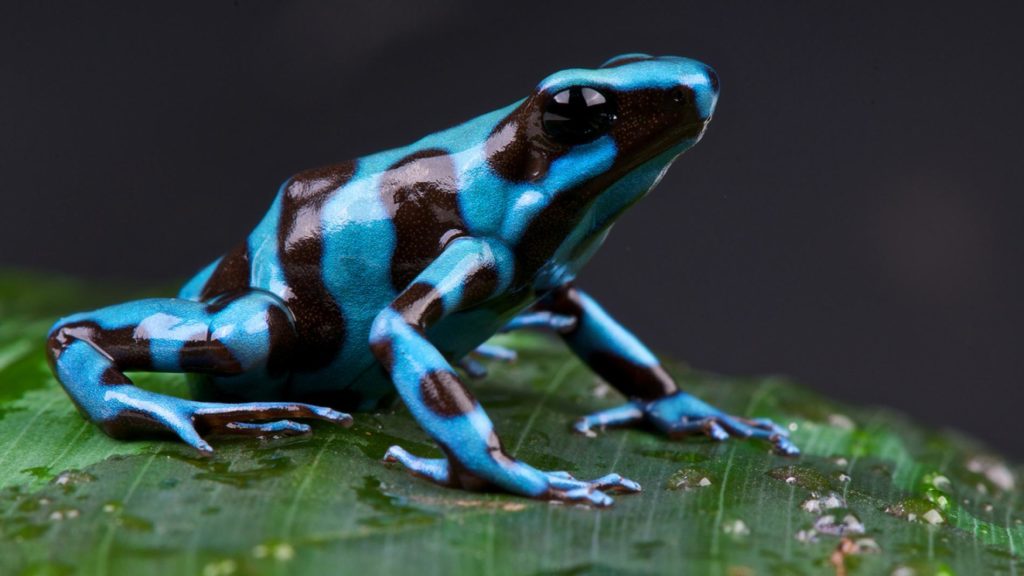
Any monster in the Amazon will allow your imagination to run wild. Will it be a giant, hairy beast? What about an ugly, slimy fish? You’d be surprised that it can also be a beautiful little frog. A frog that can kill 20,000 mice and a human in just three minutes.
The poison dart frog, or poison frog, is thought to be one of the deadliest animals on the planet. They may look beautiful with their vibrant kaleidoscope of colors, but don’t let that fool you.
They feed on specific insects, such as ants and beetles, to top up their toxin supplies, all the while being so poisonous that even touching the frog can bring you to your knees.
Poison frogs live in rainforests around Central America and South America. They grow up to two inches long and can be quite hard to see. They use their vibrant colors as a warning to would-be predators to back off.
They are commonly red, yellow, orange, green, and blue, and gold frogs are thought to contain enough poison to bring down up to 20 people! The blue poison frog is the most endangered due to habitat loss.
If this monster happens to poison you, you better hope your Will is up to date, because heart failure is imminent. There are no antidotes or cures, and death can occur within three minutes. Fortunately, there are no published reports of human death by poison frogs.
7. Jesus Lizard
The name of this lizard won’t make sense immediately. While its legitimate name is green basilisk or double-crested basilisk, most people call it Jesus lizard. Why? Because it can walk on water – and Jesus supposedly could too.
The green basilisk lizard is found in tropical rainforests across Panama, southern Mexico, and Central America. They spend most of their time hanging out in trees, but they do so around bodies of water. If they feel threatened, they will drop in the water and run for dear life! But how?
The green basilisk lizard isn’t magic. Nor does it have any spiritual abilities. Instead, it speeds at about five feet per second with its long toes and fringes of skin. Once it hits the water, the skin will spread out and offer more surface area. As long as the lizard keeps moving, the skin creates air pockets to allow it to stay afloat.
Eventually, the lizard will sink into the water, but it’s the Michael Phelps of the Amazon world. It will swim with great speed and precision to get away from its predators.
Green basilisk lizards are part of the iguana family and can grow as long as two feet. They have high crests on their backs and heads for impressing the ladies, and they have a long, whip-like tail. While not a monster in its looks, being able to walk on water is pretty out there!
6. Assassin Bug
After hearing about this Amazon monster known as the assassin bug, you will be pleased they are 0.04 inches big, and not four feet! In every way, shape, and form, these insects are monstrosities.
They are brown or black, or can be brightly marked, and don’t get their prey in the most traditional fashion. Instead of working hard by taking chase, they prefer to wait until their prey comes to them. They then ambush them and leave next to no chance for them to get away.
The way the assassin bugs feed is quite disturbing. They don’t munch and chomp as you would expect. Instead, they pierce the skin of their victims and suck the juices from their bodies. They will also deliver poisonous saliva into their victims to make their insides a liquid for a quick and easy meal. Essentially, they turn their prey into a juice box.
Cockroaches, which can even survive nuclear fallout, die within four seconds of an assassin bug attack. Caterpillars take a little longer, but they, too, only have around 10 seconds until their end comes.
When they aren’t using disturbing methods to feed, they are using wily ways of luring in their victims. They are intelligent enough to use dead termites to attract the live ones and have sticky feet to grip to their prey to ensure they don’t escape. We don’t know about you, but we’re pleased these guys aren’t huge!
5. Bullet Ant
It may surprise you to learn how this ant got its name. It could refer to its 1.2-inch length being similar to that of a bullet, but what if we were to tell you that it’s because a sting from this insect feels like being shot? And that, folks, is why this critter is a pure monster.
The bullet ant is a rainforest-dwelling red and black insect with a visible stinger and pincers. They live throughout the Amazon and build colonies around the bases of trees. They eat anthropods and nectar and, while not ordinarily aggressive, can sting when provoked.
And if you’re going to get ants in your pants, you will certainly not want them to be this kind. As soon as one bullet ant stings you, it releases a chemical that tells the rest to join in and help. Repeatedly. According to the Shmidt Pain Index, the sting feels electric, blinding, and almost like being shot with a gun – hence the name.
But it’s not just the pain that gets you, but the toxin as well. Poneratoxin in the venom causes temporary paralysis, shaking, fever, cardiac arrhythmia, vomiting, and nausea. Believe it or not, some people choose to experience this on purpose. The Brazilian Satere-Mawe people use the stinging as a rite of passage.
They sedate the ants with a herbal concoction, put them into gloves with outward-facing stingers, then make boys wear the mitts 20 times. Once he battles through the pain, he becomes a warrior. We don’t think the ants will have too much of a problem with the pain they inflict, but the boys might!
4. Bull Shark
In general, sharks get a bad rap. They are made out to be far more vicious than they really are. But that’s until you mention the bull shark, then you start to wonder whether the title is thoroughly deserved.
Bull sharks are apex predators that generally live in saltwater but can also survive in freshwater environments. They have even been found as far away from the sea as 2,400 miles in the Amazon! Female bull sharks grow around 11 feet long, and they aren’t too far short of weighing 700 pounds. Already, they are a river monster you won’t want to cross.
But its not so much their mass that should scare you, but their attitude. They are aggressive, unpredictable, and head-butt their prey before they attack. Bull sharks are also quite miserable monsters in the respect that they don’t like colors. They tend to attack colorful nets more so than neutral ones.
The bull shark boasts razor-sharp teeth (and lots of them), and it’s for this reason (and their disrespectful disposition) that they are considered one of the most dangerous sharks in the world. Their bite force is thought to be around 1,300 pounds!
They prey on anything they can get, including their own kind, and have a “take no prisoners” approach to victims. Out of all river monsters in the Amazon, the bull shark is one you’ll be hoping you won’t come across on your Amazon adventures!
3. Green Anaconda
Imagine being an animal in desperate need of a drink. You lean into a slow-moving stream or swamp, and a 29-foot, 550-pound green anaconda quickly wraps itself around you and strangles you to death. This very reality is why the green anaconda is one of the most feared species of the Amazon.
It lies in wait, submerging itself in water, for something to come along and make its day. Whether it’s a deer, pig, caiman, or something else, the green anaconda doesn’t discriminate. Given its 12-inch diameter and sheer strength, it’s also not out of the question for it to take down a human, although there haven’t been any recorded cases of this in the Amazon.
These snakes are stealthy and agile in the water, but a little bit more clumsy on land. They also aren’t venomous and use their bodies to suffocate their prey. They might not be as vicious as some other monsters of the Amazon, but you won’t find all too many humans willing to cross them!
2. Wandering Spiders
Spiders of any kind can be terrifying if you have enough fear, but do you know what’s even scarier than spiders? Ones that wander. Wandering spiders from Brazil are the most venomous in the world. So much so that their scientific name of Phoneutria is Greek for murderous.
Unlike regular spiders that build webs and lie in wait for food to come to them, wandering spiders go out looking. They crawl along the ground and even hide in houses, cars, and banana plants. Accidentally stumbling across one can be fatal.
Wandering spiders only grow up to around five inches, which makes them even harder to detect. Often until it’s too late. Thankfully, an antidote was found in 1996, but not before 14 people had lost their lives to bites.
Aside from pain and inflammation, people who have been bitten by a wandering spider can also lose control of their muscles, experience respiratory paralysis, then eventually lose their life. The wandering spider with strong, spiny legs, eight eyes, and a lot of hair, may not be giant, but there’s no denying it’s a monster.
1. Amazonian Giant Centipede
Looking at the Amazonian Giant Centipede, you may be wondering two things: how on earth people keep them as pets, and how challenging it would be to craft trousers for them. This critter is one of the largest centipedes in the world. It can grow up to around 12 inches and has a diet consisting of invertebrates, lizards, snakes, frogs, and many creatures much, much larger than itself.
But it’s not so much its size that makes this critter a monster, but its killing ability. It has forcipules, which look like legs, and it uses these to inject a toxic venom into its prey’s bloodstream. It can also climb, hang from ceilings, and make some pretty crazy acrobat moves all in the name of dinner. Its venom is not the nicest to be injected with either, and it has killed a four-year-old child in the past.
The venom affects the nervous system, which impacts heart rate, respiration, and muscles. Humans are an unlikely target, but if an Amazonian giant centipede is feeling threatened, it won’t hesitate in biting. For some reason, people still keep them as pets. How absurd!
Outro
Does the Amazon sound like a place you’d like to visit? What if you were to come across any of these monsters? Also, check out our other cool stuff showing up on the screen now. See you next time.
